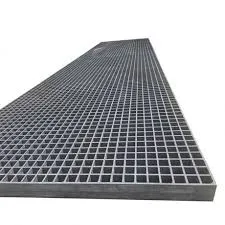
-
 Afrikaans
Afrikaans -
 Albanian
Albanian -
 Amharic
Amharic -
 Arabic
Arabic -
 Armenian
Armenian -
 Azerbaijani
Azerbaijani -
 Basque
Basque -
 Belarusian
Belarusian -
 Bengali
Bengali -
 Bosnian
Bosnian -
 Bulgarian
Bulgarian -
 Catalan
Catalan -
 Cebuano
Cebuano -
 China
China -
 China (Taiwan)
China (Taiwan) -
 Corsican
Corsican -
 Croatian
Croatian -
 Czech
Czech -
 Danish
Danish -
 Dutch
Dutch -
 English
English -
 Esperanto
Esperanto -
 Estonian
Estonian -
 Finnish
Finnish -
 French
French -
 Frisian
Frisian -
 Galician
Galician -
 Georgian
Georgian -
 German
German -
 Greek
Greek -
 Gujarati
Gujarati -
 Haitian Creole
Haitian Creole -
 hausa
hausa -
 hawaiian
hawaiian -
 Hebrew
Hebrew -
 Hindi
Hindi -
 Miao
Miao -
 Hungarian
Hungarian -
 Icelandic
Icelandic -
 igbo
igbo -
 Indonesian
Indonesian -
 irish
irish -
 Italian
Italian -
 Japanese
Japanese -
 Javanese
Javanese -
 Kannada
Kannada -
 kazakh
kazakh -
 Khmer
Khmer -
 Rwandese
Rwandese -
 Korean
Korean -
 Kurdish
Kurdish -
 Kyrgyz
Kyrgyz -
 Lao
Lao -
 Latin
Latin -
 Latvian
Latvian -
 Lithuanian
Lithuanian -
 Luxembourgish
Luxembourgish -
 Macedonian
Macedonian -
 Malgashi
Malgashi -
 Malay
Malay -
 Malayalam
Malayalam -
 Maltese
Maltese -
 Maori
Maori -
 Marathi
Marathi -
 Mongolian
Mongolian -
 Myanmar
Myanmar -
 Nepali
Nepali -
 Norwegian
Norwegian -
 Norwegian
Norwegian -
 Occitan
Occitan -
 Pashto
Pashto -
 Persian
Persian -
 Polish
Polish -
 Portuguese
Portuguese -
 Punjabi
Punjabi -
 Romanian
Romanian -
 Russian
Russian -
 Samoan
Samoan -
 Scottish Gaelic
Scottish Gaelic -
 Serbian
Serbian -
 Sesotho
Sesotho -
 Shona
Shona -
 Sindhi
Sindhi -
 Sinhala
Sinhala -
 Slovak
Slovak -
 Slovenian
Slovenian -
 Somali
Somali -
 Spanish
Spanish -
 Sundanese
Sundanese -
 Swahili
Swahili -
 Swedish
Swedish -
 Tagalog
Tagalog -
 Tajik
Tajik -
 Tamil
Tamil -
 Tatar
Tatar -
 Telugu
Telugu -
 Thai
Thai -
 Turkish
Turkish -
 Turkmen
Turkmen -
 Ukrainian
Ukrainian -
 Urdu
Urdu -
 Uighur
Uighur -
 Uzbek
Uzbek -
 Vietnamese
Vietnamese -
 Welsh
Welsh -
 Bantu
Bantu -
 Yiddish
Yiddish -
 Yoruba
Yoruba -
 Zulu
Zulu
Essential Chemical Products for FRP Applications A Complete Reference Guide
Chemical Products for FRP Applications A Comprehensive Guide
Fiberglass Reinforced Plastics (FRP) have garnered significant attention in various industries due to their composite nature—offering superior strength-to-weight ratios, corrosion resistance, and design flexibility. The effectiveness and longevity of FRP applications depend heavily on the chemical products used in their manufacturing and maintenance. This comprehensive guide delves into the essential chemical materials utilized for FRP applications, highlighting their importance and functionalities.
At the core of FRP composites is the resin system, which is crucial for binding the glass fibers and providing the desired mechanical properties. The most commonly used resins include polyester, vinyl ester, and epoxy. Each type of resin has its unique properties
1. Polyester Resins These are the most widely used due to their cost-effectiveness and ease of processing. Unsaturated polyester resins offer good mechanical properties and are resistant to water and some chemicals, making them suitable for a wide range of applications from marine structures to automotive parts.
2. Vinyl Ester Resins Vinyl esters provide enhanced corrosion resistance compared to polyester resins and are ideal for chemical storage tanks and piping systems. They offer a balance of performance and cost, making them a preferred choice for applications where chemical exposure is high.
3. Epoxy Resins Recognized for their superior adhesion, chemical resistance, and mechanical properties, epoxy resins are used in high-performance applications such as aerospace, automotive, and wind energy. Their ability to bond well with both fibers and fillers makes them so versatile.
chemical products for frp applications a comprehensive guide ...

In addition to resin systems, hardeners and catalysts play a pivotal role in the curing process. Hardeners accelerate the curing reaction, allowing for rapid product development, while also influencing the final properties of the composite. Common hardeners include methyl ethyl ketone peroxide (MEKP) for polyester and vinyl ester systems, and amine-based hardeners for epoxy systems.
Another critical aspect of FRP applications is the use of additives and fillers. These materials can enhance properties such as fire resistance, UV stability, and impact strength. For instance, flame retardants are incorporated into the resin systems to minimize fire hazards, while UV stabilizers help improve the longevity of outdoor applications. Fillers such as talc, calcium carbonate, and silica not only reduce costs but can also improve mechanical performance and processability.
Surface treatments and coatings are equally vital for FRP products. They provide protection against environmental factors and mechanical wear. Gel coats, which are typically polyester-based, are often applied to give FRP surfaces a smooth finish and provide additional UV protection, which is essential for outdoor applications.
Finally, maintenance of FRP components requires knowledge of chemical cleaning agents that are compatible with the materials. Regular cleaning using non-corrosive chemicals helps prevent degradation and extends the life of the FRP products.
In conclusion, the selection of chemical products for FRP applications is paramount for ensuring the performance and durability of the final products. By understanding the properties and appropriate usage of resins, hardeners, additives, and coatings, manufacturers can optimize their FRP solutions for a myriad of industries. As technology advances, the development of new chemical products will further enhance the capabilities of FRP, driving its adoption across more sectors. This guide serves as a foundational resource for professionals seeking to navigate the complexities of materials selection in FRP applications.









